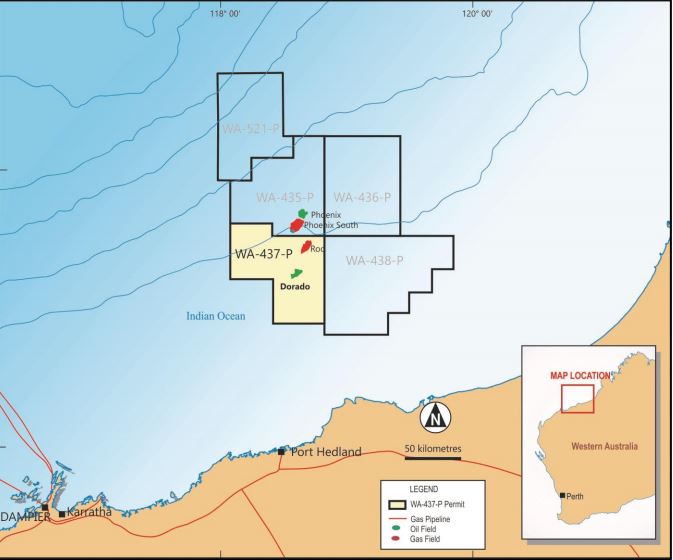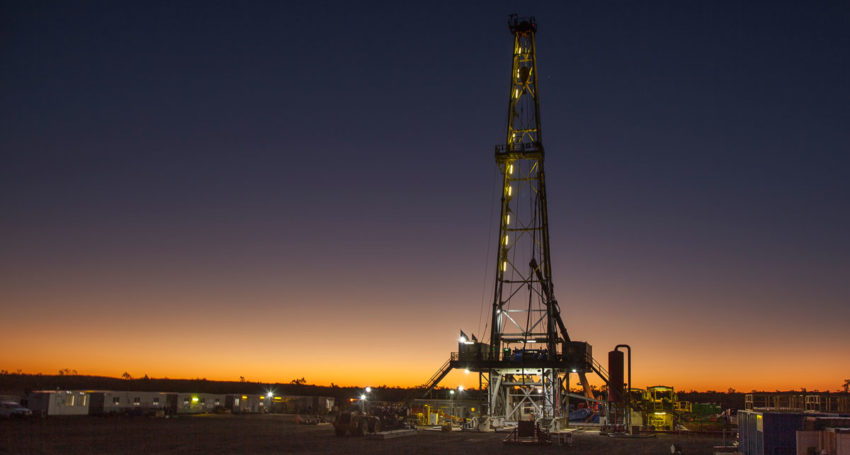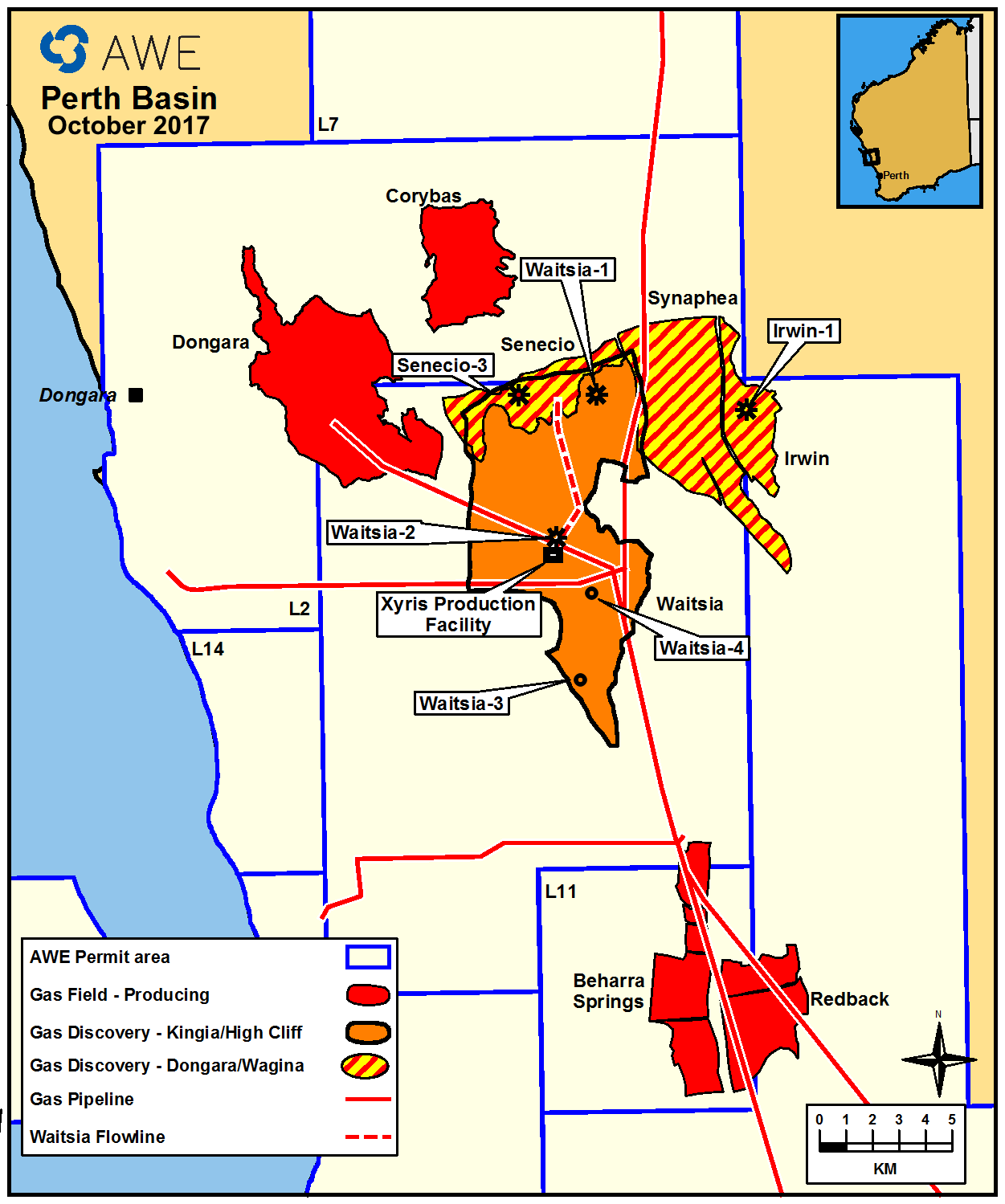Initial flow testing of the deeper Baxter reservoir of the Santos-operated Dorado-3 well has successfully exceeded expectations.
Carnarvon Petroleum, which holds a 20% stake in Dorado, said the initial clean-up flow rate test over the Baxter Member was conducted over a 12-hour period with the flow rate constrained by the surface well equipment.
The company said the flow rate achieved a maximum possible measured rate of approximately 48 million standard cubic feet (“MM scf”) per day of gas and 4,500 barrels (“bbls”) per day of associated condensate through a 60/64” choke. This is equivalent to approximately 15,300 barrels of oil equivalent (“boe”) per day using Carnarvon’s 4.45 Bscf per MMBoe conversion rate for the Baxter gas.
The well test was conducted over an approximate 7.4 metre interval of net Baxter reservoir and importantly was achieved with only 150 psi drawdown, Carnarvon added.
Once flow testing operations and data interpretation for both the Baxter and Caley reservoirs have been completed, Carnarvon will be in a position to provide guidance on the projected flow rates that could be expected for less constrained production scale wells.
Carnarvon Managing Director, Mr Adrian Cook, said: “The initial results from the Baxter well test have comfortably exceeded our pre-test expectations, with the measured rates being at the surface equipment capacity, indicating the reservoir had the capacity to flow at significantly higher rates.
“The well test has confirmed our assessment that the Baxter reservoir contains a condensate-rich gas capable of flowing at commercial rates with minimal impurities.”
“This flow test information is important to the Joint Venture in terms of selecting a final concept for developing this project.
“Carnarvon looks forward to the final phase of appraisal for the Dorado field with the upcoming well-test of the Caley reservoir.”
The gas and condensate compositions from the Baxter well test are in line with expectations with around 2 to 5% basic sediments and water (BS&W). Non-hydrocarbon gases are nominal with around 1.5% carbon dioxide (CO2), Carnarvon said.
The Baxter well test continued for another 24 to 48 hours with multi-rate flow tests and pressure build-ups to gain further important reservoir information.
At the completion of the current well test, the Baxter formation will be isolated and operations will commence to prepare for testing the Caley reservoir. Current indications are that the Caley well test results will be available within days.





